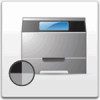Lexmark Monochrome Laser Complete Printer Reference (1.7 MB) - Page 177
Viewing flash memory and disk contents, Setting passwords, Deleting files, Managing memory
 |
View all Lexmark Monochrome Laser manuals
Add to My Manuals
Save this manual to your list of manuals |
Page 177 highlights
Viewing flash memory and disk contents Select the Print Directory menu item from the Setup Menu to print a list of the resources stored on flash or disk. This list shows information such as remaining storage space, file names, and file sizes. You can also view the contents of flash memory or disk from MarkVision or by sending the PJL LPRINTDIRECTORY command. Refer to the Technical Reference for more information. Setting passwords You can set password protection for flash or disk devices, or for the files stored on the device. Flash or disk devices that are write protected cannot be formatted or selected as a download target, and their contents cannot be deleted, renamed, or updated. Read/write passwords ensure that the files cannot be viewed or printed unless the correct password is specified. A read/write password takes precedence over a write password. Note: Only one password can be applied to any resource. You can use passwords to protect data from corruption or loss, or to prevent access by unauthorized personnel. For example, you might set read/write protection on a signature macro file on a flash device to ensure the signature is used only by people who know the password. You might also set write protection on the entire device so all other files can be used, but not changed, during the normal course of business. If you lose or forget a password, contact the Lexmark Customer Support Center. Security for the printer requires that both you and Lexmark provide independent information to recover a password. For details on how to use passwords to protect resources, refer to the printer Technical Reference. Deleting files When you delete a file from flash or disk, the complete file is removed and the space it occupied is immediately available for other purposes. Managing memory 177















